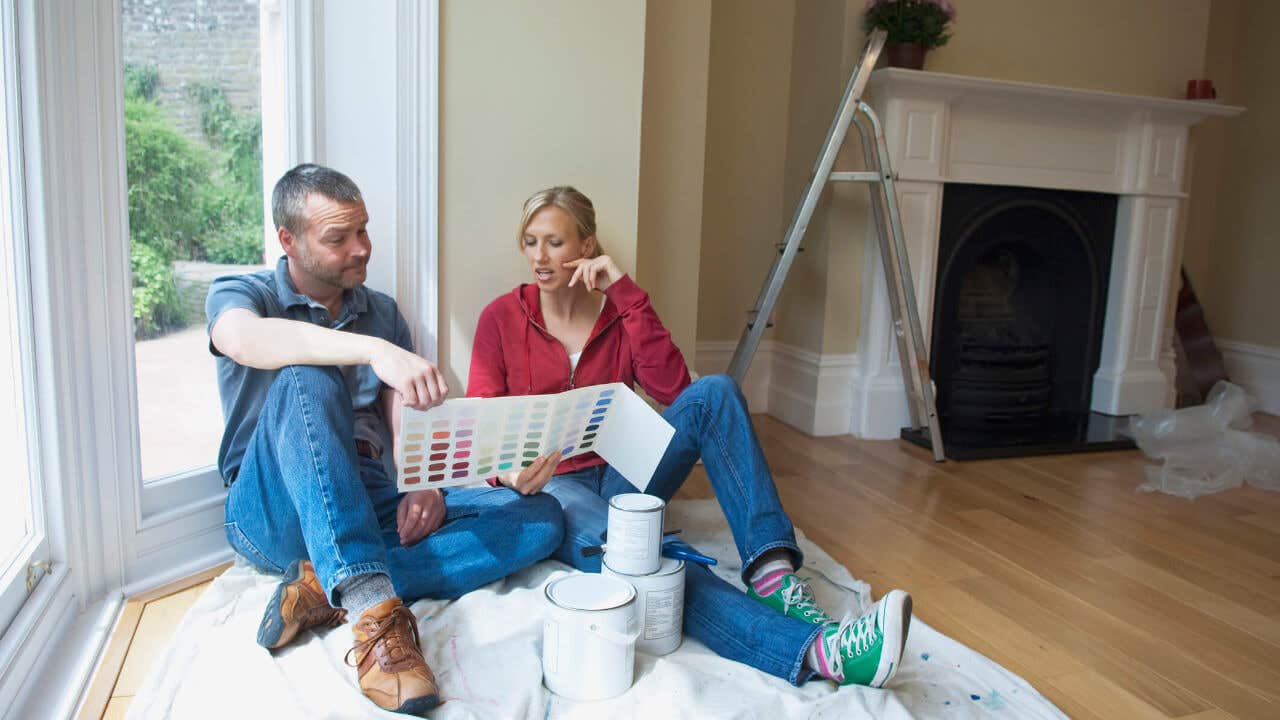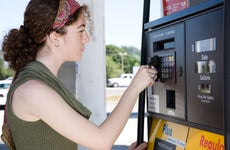Poll: Homeowners taking on upgrades during the pandemic

The Bankrate promise
At Bankrate we strive to help you make smarter financial decisions. While we adhere to strict , this post may contain references to products from our partners. Here's an explanation for . The content on this page is accurate as of the posting date; however, some of the offers mentioned may have expired. Terms apply to the offers listed on this page. Any opinions, analyses, reviews or recommendations expressed in this article are those of the author’s alone, and have not been reviewed, approved or otherwise endorsed by any card issuer.
Fifty-nine percent of homeowners have already completed at least $500 worth of home upgrades during the pandemic (47 percent) or plan to before the end of the year (48 percent), according to a new Bankrate poll.
And 75 percent of those homeowners are millennials, compared with Gen-Xers (58 percent) and boomers (55 percent).
Almost half of those surveyed went into debt for their renovations: Thirty percent used or plan to use a credit card and pay it off over time and 37 percent used or plan to use a credit card and pay it off all at once, while others used or plan to use store financing (15 percent), a personal loan (10 percent) or home equity borrowing or mortgage refinancing (6 percent).
The home improvement industry is booming during the COVID-19 pandemic because most people are spending a lot more time at home, leading them to spend a lot of money and effort customizing their living spaces, said Bankrate industry analyst Ted Rossman.
Rossman was relieved to discover that so many people are using credit cards and paying them off, which is an excellent way to earn rewards, especially with some of today’s best credit cards.
“But there are still a lot of people putting these home upgrades on credit cards and financing over time, which can be one of the worst ways to borrow because the average interest rate is about 16 percent,” he said.
Home improvement poll: Major findings
Here’s what else our homeowner upgrade poll revealed:
- New appliances are a popular upgrade: Thirteen percent of homeowners who have already upgraded chose new appliances as their No. 1 change, new electronics came in second at 12 percent and new furniture came in third at 11 percent. Twenty-six percent said they took on other home improvements and renovations.
- As far as those who will be upgrading between now and the end of 2020, 11 percent each plan to buy new appliances, electronics and furniture, while 29 percent said they were planning other improvements.
- Bathrooms topped the list for renovations: Among those who upgraded or plan to upgrade, 61 percent chose a bathroom, 53 percent a kitchen, 52 percent the home’s infrastructure (roof, HVAC, etc.), 52 percent major landscaping, 46 percent a bedroom and 44 percent something else.
- Parents with younger kids are upgrading a lot: Parents with kids under 18 have done or plan to do the most renovations (75 percent), compared with parents with older kids (57 percent) and non-parents (55 percent).
- State stats: Breaking the data down among U.S. states, Northeasterners upgraded or plan to upgrade their homes the most (66 percent), Westerners came in second (61 percent), Midwesterners third (59 percent) and Southerners last (56 percent).
The survey of 1,271 U.S. adults was conducted online between August 12-14, 2020. See survey methodology.
Millennials take pride in their homes
There’s a lot of pride among millennial homeowners, said Matt Ehrlichman, CEO of the home services website Porch.
“These are largely first-time homeowners with a strong ambition for upward mobility, so it makes sense to see this segment invest in their homes and add value during this unusual time,” Ehrlichman said.
Homeowners driven by boredom, lockdowns
Maggie Baker is a psychologist, financial therapist and author of the book, “Crazy About Money: How Emotions Confuse Our Money Choices And What To Do About It.”
She noted that since the pandemic began, people have spent way more time at home and have started to notice more what needed to be fixed and what they didn’t like.
And the boredom and irritation resulting from the restrictions of stay-at-home living propelled many to start a home improvement plan as a priority and focus, she added.
It makes sense to Baker that boomers aren’t the group making the most improvements because in general, homeowners in their 60s and 70s have less need for upgrades.
Low rates, market boom might be fueling renovations
Porch CEO Ehrlichman said the pandemic has created a paradigm shift among homeowners.
“This time period has enabled people who ordinarily wouldn’t start a home improvement project to suddenly dive right in,” Ehrlichman said.
Whether it’s because they suddenly had the time available, the funding, a strong desire to start nesting — or perhaps a combination of all of these factors — the surge isn’t surprising, he added.
Although in certain respects we are in a true economic recession, Ehrlichman said, homeowners tend to skew wealthier and many who have investments are suddenly flush with cash and have access to once-in-a-lifetime opportunities for cheap borrowing.
“For this reason, we may look to historically low borrowing rates and a booming stock market as drivers for an increase in home improvements,” he pointed out.
Home improvement-related discount searches are up
Marc Mezzacca, founder of the website CouponFollow, saw strong interest levels picking up since mid-April for discounts from hardware stores like Home Depot, Lowe’s and Ace Hardware, as well as e-commerce-only hardware destinations such as Zoro.
And during April and May he witnessed a 20- to 25-percent increase in home improvement-related discount searches stemming from greater interest in DIY projects in combination with constrained budgets.
Home Depot had its best quarter in 20 years, Mezzacca noted, but cautioned that as unemployment benefits expire consumer spending on DIY and home improvement projects might plunge.
“People were definitely looking to keep busy and get some projects around the house done, but were also conscious of the impact on their wallets,” Mezzacca said.
If you must borrow to upgrade, pay it back ASAP
Clearly the pandemic has had an effect on Americans’ desire to renovate and upgrade their homes — and it’s the perfect time to do it.
If it’s at all possible to upgrade your home without borrowing, that’s great.
But if you don’t have the cash on hand to take on home projects, using a credit card or other kind of financing can be beneficial.
Just keep in mind it’s always best to pay off that debt as soon as you possibly can so you can avoid excessive interest costs and keep your credit in good standing.
Survey methodology
Bankrate commissioned YouGov Plc to conduct the survey. All figures, unless otherwise stated, are from YouGov Plc. Total sample size was 1,271 adults, including 1,230 adults with personal debt. The survey was conducted online from August 12-14, 2020.
Related Articles


Survey: Most Americans losing out on easy money during coronavirus pandemic

Survey: More Americans say pandemic has delayed financial milestones

Survey: 59 million have lost money on canceled plans due to coronavirus